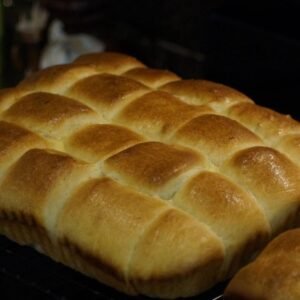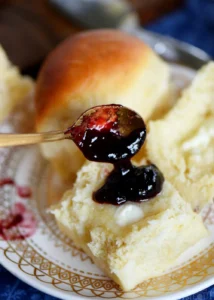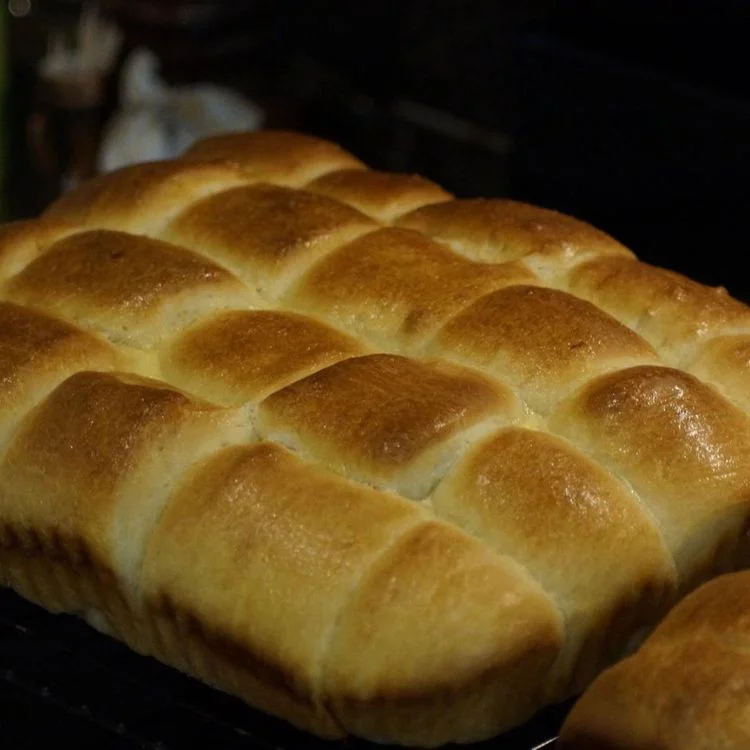Home Made Dinner Rolls Recipe
Homemade Dinner Rolls
Introduction
Soft, pillowy dinner rolls fresh from the oven can transform any meal into a comforting feast. By crafting these rolls from scratch, you gain complete control over texture, flavor, and—most importantly—freshness. Whether served alongside a hearty soup, used for slider sandwiches, or simply enjoyed with a pat of butter, these homemade rolls deliver a warm, tender crumb that store-bought varieties simply cannot match. This guide will walk you through every detail, from gathering ingredients to baking and storing, so you can enjoy the rewarding experience of baking bread at home and impress friends and family with warm, golden-brown rolls.

Ingredients
- All-Purpose Flour: 4 cups (500 g), plus additional for dusting and shaping.
- Active Dry Yeast: 2 ¼ teaspoons (one standard packet).
- Warm Milk: 1 cup (240 ml), heated to about 105–115 °F (40–45 °C).
- Warm Water: ½ cup (120 ml), also around 105–115 °F (40–45 °C).
- Granulated Sugar: ¼ cup (50 g).
- Unsalted Butter: 4 tablespoons (56 g), melted and slightly cooled, plus extra for brushing.
- Salt: 1 ½ teaspoons (about 9 g).
- Large Egg: 1, at room temperature.
- Egg Wash: 1 egg beaten with 1 tablespoon of water (to give rolls a glossy finish).
Equipment Needed
- Large mixing bowl or stand mixer fitted with a dough hook.
- Baking sheet or greased loaf pan (9 × 13 inch recommended).
- Pastry brush for applying egg wash or melted butter.
- Kitchen towel or plastic wrap to cover dough while rising.
- Instant-read thermometer (optional, but helpful for checking liquid temperatures).
Step-by-Step Instructions
- Activate the Yeast
- In a small bowl or liquid measuring cup, combine the warm water (½ cup) with 1 teaspoon of granulated sugar.
- Sprinkle the active dry yeast on top and gently stir. Let this sit undisturbed for 5–10 minutes. A healthy yeast mixture will become foamy and bubbly, indicating the yeast is alive and active. If no foam appears after ten minutes, discard and begin with fresh yeast to ensure proper rising.
- Combine Wet Ingredients
- In a large mixing bowl (or the bowl of a stand mixer), whisk together the warm milk (1 cup), remaining sugar (total sugar less the teaspoon used with yeast), melted butter, room-temperature egg, and salt.
- Stir the mixture until most of the sugar has dissolved and the ingredients are well incorporated.
- Incorporate the Yeast Mixture
- Once the yeast mixture is foamy, pour it into the bowl containing milk, butter, and egg. Stir gently to distribute the yeast evenly.
- Add Flour & Form Dough
- Add 3 cups (375 g) of flour to the wet ingredients. If using a stand mixer, attach the dough hook and start mixing on low speed until the dough begins to pull together into a shaggy mass. If mixing by hand, use a sturdy wooden spoon.
- Continue mixing and add the remaining 1 cup (125 g) of flour gradually, about ⅓ cup at a time. The dough should form a cohesive ball and pull away from the sides of the bowl when ready.
- Knead Until Smooth
- Knead the dough for 8–10 minutes total. If using a stand mixer, let it knead on medium speed until the dough is smooth, elastic, and slightly tacky but not sticky to the touch. If kneading by hand, turn the dough onto a lightly floured surface and work it until it springs back slightly when pressed. Add small pinches of flour as needed to prevent sticking, but avoid adding too much to keep the rolls tender.
- First Rise (Bulk Fermentation)
- Shape the dough into a tight ball and place it in a lightly oiled bowl, turning once to coat the entire surface with oil.
- Cover the bowl with plastic wrap or a clean kitchen towel. Let it rise in a warm, draft-free spot until doubled in size, about 1–1½ hours. An ideal environment is around 75–80 °F (24–27 °C).
- Shape the Rolls
- Gently punch down the risen dough to deflate it, then transfer to a lightly floured work surface.
- Divide the dough into 12 equal pieces (each slice weighing roughly 70 g if measured).
- For each piece, shape into a tight, smooth ball by folding edges under and pinching seams closed. Place each ball seam-side down on a greased baking sheet or in a greased 9 × 13 inch pan. Arrange them in three rows of four, leaving about 1 inch of space between each.
- Second Rise (Proofing)
- Cover the shaped rolls loosely with greased plastic wrap or a kitchen towel.
- Allow them to proof in a warm spot for 30–45 minutes, until they have nearly doubled in size and appear puffy.
- Preheat the Oven & Apply Egg Wash
- While rolls are proofing, preheat your oven to 375 °F (190 °C).
- In a small bowl, whisk together the remaining egg and 1 tablespoon of water to create an egg wash. Just before baking, remove the covering and gently brush the tops of each roll with the egg wash. This will give a shiny, golden-brown finish.
- Bake
- Place the pan in the center of the preheated oven. Bake for 15–18 minutes, rotating the pan halfway through if your oven heats unevenly.
- Rolls are done when the tops are deep golden brown and they sound hollow when tapped gently on top.
- Brush with Butter & Cool
- Immediately upon removing from the oven, brush the hot rolls with melted butter. This gives a soft, flavorful crust.
- Let the rolls cool in the pan for about 5 minutes, then transfer to a wire rack to cool for an additional 5–10 minutes. Serve warm or at room temperature.

Tips & Variations
- Herb-Infused Rolls: During kneading, add 1–2 tablespoons of finely chopped fresh herbs like rosemary, thyme, or parsley. For garlic lovers, add a clove of minced garlic or garlic powder.
- Sweet Dinner Rolls: Increase sugar to ⅓ cup (67 g) and swirl in a teaspoon of vanilla extract. After baking, brush with a honey-butter glaze (2 tablespoons melted butter mixed with 2 tablespoons honey) for a subtle sweetness.
- Whole Wheat Blend: Replace 1 cup of all-purpose flour with whole wheat flour. Reduce mixing time slightly, as whole wheat absorbs liquid differently. Expect a denser texture and richer flavor.
- Cheesy Rolls: To create cheese-stuffed rolls, flatten each dough ball slightly, place a small cube (about ½ inch) of cheddar or mozzarella in the center, then seal and reshape into a ball. Proceed with proofing and baking.
- Make-Ahead Overnight Proof: After shaping into rolls, cover tightly with greased plastic wrap and refrigerate overnight. The next morning, let them sit at room temperature for 30–45 minutes until puffy, then brush with egg wash and bake. This approach deepens flavor through slow fermentation.
Storage & Reheating
- Room Temperature: Once cooled completely, store rolls in an airtight container or zip-top bag for up to 3 days. To refresh, microwave a roll for 10 seconds or warm in a 300 °F (150 °C) oven for 5 minutes.
- Freezing: Allow rolls to cool, then wrap each tightly in plastic wrap and place in a freezer-safe bag. Freeze for up to 2 months. To reheat, remove desired number of rolls from the freezer, unwrap, and let thaw at room temperature for 30 minutes. Warm in a 350 °F (175 °C) oven for 8–10 minutes, brushing with melted butter for extra softness.
Yield & Timing
- Yield: Makes 12 generously sized dinner rolls.
- Active Prep Time: Approximately 20–25 minutes.
- Total Time (including both rises): Roughly 2 hours 45 minutes, though active “hands-on” time is closer to 30 minutes.

Serving Suggestions
Serve these rolls warm with butter, alongside soups such as tomato bisque or chicken noodle. They also pair beautifully with roast chicken, hearty stews, and holiday spreads. For sandwich sliders, split rolls in half and fill with deli meats, cheese, or pulled pork. Their tender crumb and golden crust elevate any combination.
Enjoy the simple pleasure of homemade bread—the aroma that fills your kitchen and the taste that brings comfort to every bite.







